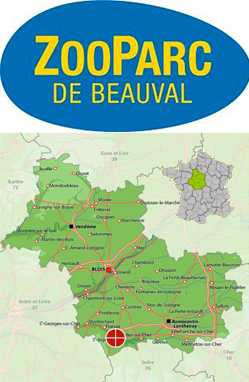Projects - Beauval Zoo
Projects - Beauval Zoo

Beauval Zoo goals
- Reduce greenhouse gas emissions and produce a local green energy
- Reduce the volatility of energy costs
- Promote local resources
Services provided by LEDJO Energie
- Field study
- Feasibility Study
- Contracting owner support
Background and history of the project
Created 30 years ago by Francoise Delord, in southern Loir et Cher, Beauval was originally a small bird park. Over the years, tropical greenhouses, white tigers, African savannah, manatees, gorillas, koalas and now pandas have made the Beauval zoo grow to be one of the finest zoos in the world, home to hundreds of species in innovative and modern facilities.
The zoo’s biogas plant aims to replace the natural gas used to heat the greenhouses, with a renewable energy reducing energy costs and the zoo’s carbon footprint. The heat from the cogeneration plant will be used to heat the greenhouses closest to the biogas plant location.
Benefits for the community
The Beauval zoo project is a territorial intelligence project. It brings together local actors and waste from within a radius of 20 km around the zoo. The site will treat the effluents of the zoo, but also a set of agro-industry and agricultural co-products (vegetable waste, livestock manure ...).
The project helps to reduce the environmental impact of the zoo, and provides jobs locally.
Biogas and thermal
Biogas is recovered in a cogeneration unit with an output of 265 kW el.
The electricity is fed into the network.
The heat from the cogeneration plant biogas is used to heat the greenhouses closest to the biogas plant location.
- Greenhouse manatees
- Greenhouse gorillas
- Winter Building elephants
Energetic performance of the unit
Methane production: 500,000 Nm3 / year
ELECTRICITY
Electrical power: 265 kW
Marketable production: 2,070,000 MWh / year
HEAT
Thermal power: 184 kW th
Gross Heat Production: 1,508,800 MWh / year
Consumption: 400,000 MWh / year
Usable production: 1,108,800 MWh / year
Environmental Impact
The project would avoid the emission into the atmosphere of 760 tons of CO2 equivalent / year.
These emission savings represent over 80 round-trips Paris New York or the equivalent of the annual circulation of over 255 vehicles (average circulation 17,000 km).


